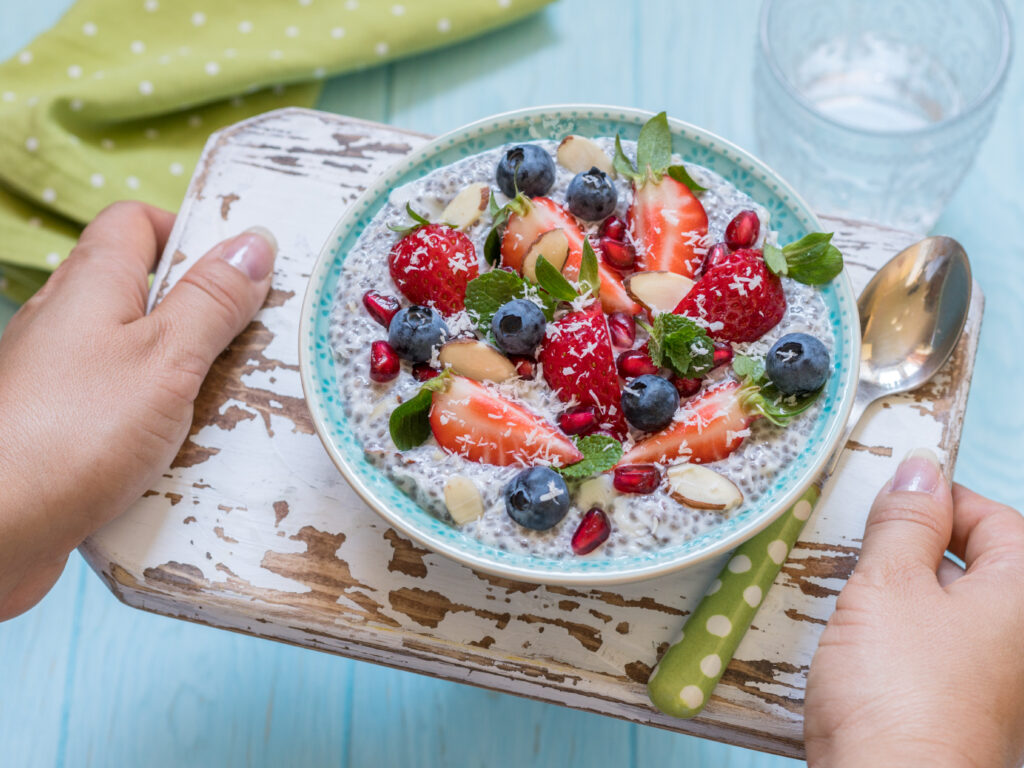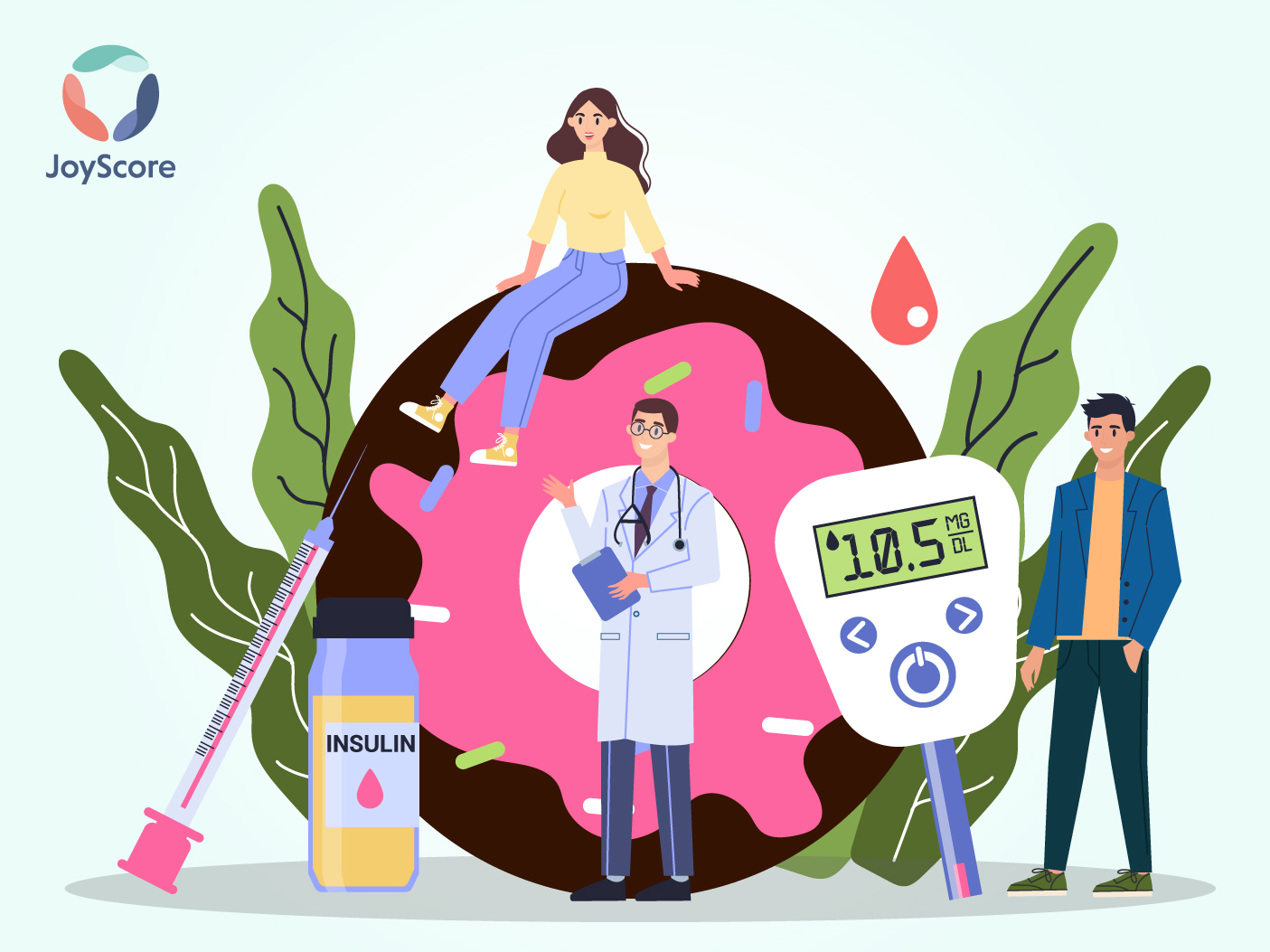I got my facts corrected a little late when my father was diagnosed with diabetes. I had assumed consuming sweets and chocolates was the reason for high “sugar” levels in the body. After doing a little research out of curiosity, I found out that diabetes occurs due to increased glucose levels in the blood cells, either caused by insufficient insulin in the body or the ineffectiveness of insulin on our blood cells.
What is Diabetes?
Diabetes has become the most common chronic disease in the current lifestyle. In 2019, diabetes patients worldwide were estimated to be 9.3% (463 million people), and it is predicted to rise by 10.2% (578 million) in 2030. These statistics consist of three types of diabetes patients.

Know your Diabetes
In the first type, the body produces no insulin or a very little amount. The immune system, responsible for fighting off viruses and diseases, attacks and destroys the secretion house of insulin, the pancreas. Instead of diffusing the insulin in the cells, the sugar in the bloodstream builds up. Although weight is not a reason for the first type, a combination of genetic susceptibility and environmental factors is believed to trigger the disease. The second type, the most common form of diabetes, can be caused due to lifestyle factors or genes. When our body is inactive, as it does not get physical exercise, it starts putting on weight leading to obesity or being overweight. This causes insulin resistance, the inability of the blood cells to utilize the insulin transported from the pancreas. Extra weight around the belly develops when our body lives in a prolonged sedentary position, which has become a lifestyle in the pandemic. Also, a bad diet can be a reason. This can link to insulin resistance and heart and blood vessel diseases too. Prediabetes is the initial stage of type 2 where blood sugar is high but not as high to be turned into type 2 diabetes. The last type is Gestational diabetes. It can be activated during pregnancy as pregnancy leads to insulin resistance. Though gestational diabetes is temporary, if not taken necessary precautions, it can result in further complications.

ABCs of Diabetes
Tensed you might have one of these factors in your routine?
You need to know your ABCs if you have diabetes. A firm control on your ABCs can lower the risk of strokes or heart attack, since a diabetic person is more likely to counter them compared to a non diabetic person. The American Diabetes Association and the American College of Cardiology have teamed up to raise awareness of “ ABC of diabetes”. A stands for A1C test which shows an average of your blood glucose level from the last 3 months. Your number should be below 7. It is advised to take this test at least twice a year. B stands for blood pressure. The heart works harder with higher blood pressures. Keeping the blood pressure under control in case of diabetes, can prevent the risk of heart attacks, strokes or kidney diseases. Many people aim for the blood pressure levels to be below 140/90 or lower in some cases. C stands for cholesterol. Cholesterol is the waxy substance produced by the liver to protect nerves, make cell tissue and used to secrete certain hormones. LDL or bad cholesterol should be below 100. HDL or good cholesterol should be 40 or higher. Higher amounts of bad cholesterol can also be a striking factor for heart attacks and other cardiovascular diseases.

How to live with Diabetes
Keeping the ABCs numbers checked and doing every possible thing to manage diabetes, the question now is will it ever fully cure. Studies suggest that type 2 can be reversible in some cases. There is no cure yet but through proper diet and regular exercise, one has a chance to reverse it. Living with diabetes needs an iron will to make lifestyle changes. While making these changes you can face a lot of stress which may affect your glucose levels. Your body responds with fight or flight mechanisms when you are experiencing stress. This increases the hormone levels in the blood and consequently elevated glucose in the bloodstream. Your body may not act on this glucose if you have diabetes, giving rise to high sugar levels. Hence, it is important to manage stress in the day to day life. Starting your day with 15 mins meditation can set a tone for the rest of your day. You can simply sit in a chair and recite mantras like “I will have a good day” or “today is the best day of my life”. You can also focus on your breathing, naturally resisting the unwanted thoughts in your mind. Regular practice of meditation will definitely give you peace of mind and also keep you calm in times of stressful situations. The major changes with the most effective results are eating habits and exercise. Higher intake of fatty fish, leafy greens, eggs, avocados, beans, etc become a great source of nutrients, protein, vitamins, and fiber to lower complications of diabetes. A proper diet must be followed by regular exercise. Yoga is a real stress reliever which also makes you flexible and stabilizes your blood glucose level. All you need is a mat and some open space. If you already have a bike, hitting the road in the morning can make your heart rate go up, burn calories, and also lose weight. If not, a simple 30 minutes walk in the morning can put your body in motion and lower your stress. Putting a habit of using stairs instead of elevators or walking to the grocery store in case of buying a few items also can work up your heart and lungs and regulate the glucose levels.
Conscious choices constitute a greater change. Download JoyScore app to help you manage diabetes effectively by suggesting activities that contribute to changing your lifestyle. Let’s live a mindful and healthy life together.



